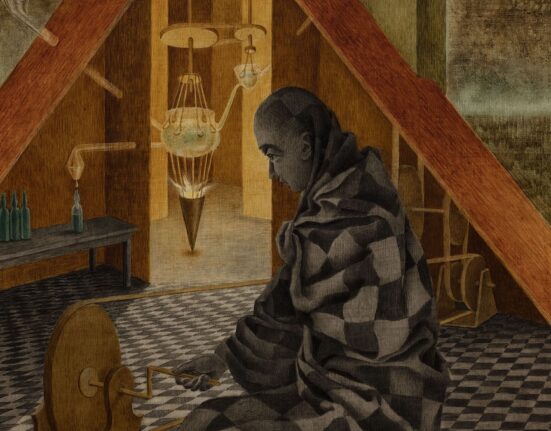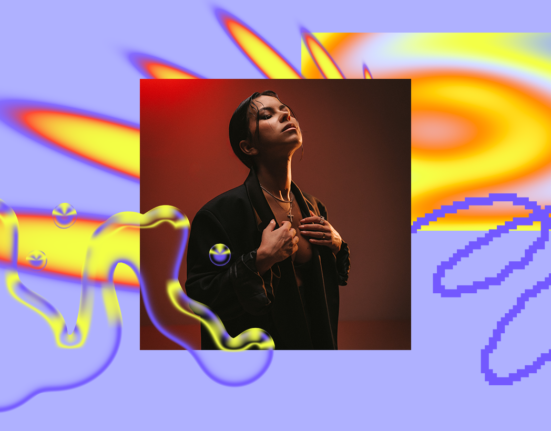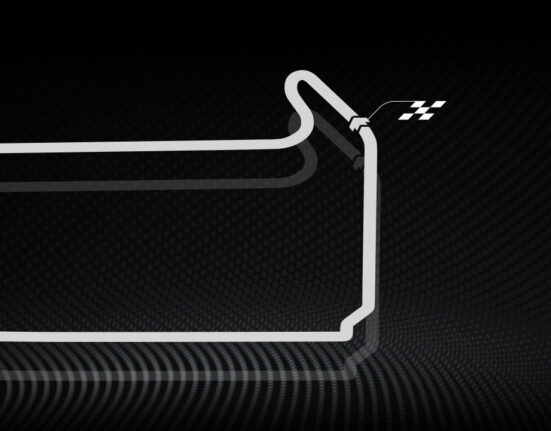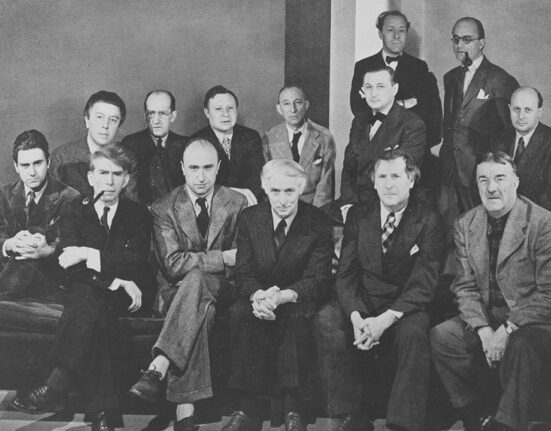
The three artists whose works make up the fall exhibits at the Wexner Center for the Arts all explore in depth issues of heritage and culture, be they Mexican, South American or Middle Eastern. At the same time, these artists consistently inject invention and even quirkiness into their works.
And don’t miss the pieces of food that each has incorporated into at least one of their pieces.
All three exhibits reflect the artists’ origins and family: the Palestinian-born Jumana Manna; Sahar Khoury, an American artist and anthropologist whose family is Arabic; and the Chicago-born Harold Mendez, a first-generation American of Mexican and Colombian descent.

Jumana Manna: ’Break, Take, Erase, Tally’
In her work, Manna investigates tensions between agriculture, industrial structures and the humans who inhabit the same areas. The ceramic sculptures in her “Limb Pipe Series” look like monstrous worms, or segments of broken sewer systems.
At the Columbus Museum of Art:Bold, spirited exhibits pay homage to Ghana and American quilting
In “Theory of an Unfinished Building,” she uses cloths that kept dust from invading building sites to create a large rectangular wall hanging that looks like an abstract painting in shades of aqua and blue. Her “Old Bread International” includes ceramic sculptures of day-old (or weeks-old) bread, referring to a practice of setting out bread for those who need. It.
Her two videos also address struggles taking place on land: “Wild Relatives” traces the Syrian War-forced journey of seeds from Aleppo through the Svalbard Global Seed Vault to Lebanon. “Foragers” follows confrontations between Palestinian pickers of wild herbs and the Israeli Nature and Parks Authority that classified the plants as endangered. Such works feel especially potent in light of the current Middle East war.
Based in Germany, Manna was originally scheduled to take part in a Nov.14 panel entitled “The Creative Future of Food,” which was part of the center’s “Director’s Dialogue on Art and Social Change” series. The panel was canceled last month.
“Given the expectation that the dialogue would include discussion of a region of the world that is now experiencing war, we feel it isn’t an appropriate time to have a conversation about food sustainability with panelists who have expertise on this topic,” the Wexner Center said in a statement sent to The Dispatch. “We will look for opportunities to reconvene the panel at a future date. Artist Jumana Manna’s exhibition remains on view through December 30 and four remaining screenings of her films Foragers and Wild Relatives will go on as planned.”
In an opinion piece for hyperallergic.com, Manna said she has received backlash following her statements of support for Palestine that were “taken out of context.”
“International institutions that have worked with me in the past or present are being harassed and pressured. This has resulted in the cancellation of public engagements and exhibitions in Germany, where I live, and elsewhere,” she wrote, linking to an article about the canceled panel at the Wexner Center. “I am not the only one. Across Europe and the United States, numerous cultural workers who identify with the Palestinian struggle have been systematically targeted, publicly defamed, sacked, or disinvited in what can only be described as an embargo on empathy for Palestinians.”

Harold Mendez: ‘one way to transform and two and three’
The title of Mendez’s exhibit refers to a poem by the Caribbean-born poet Canisia Lubrin and works include sculptures, photographs, mixed media works and assemblages. In these, Mendez examines his inherited culture and tells stories that are often sad.
The wall installation “one way to transform and two and three (a telling after the death of Cesar Aristizabal after an account on sustenance)” features cornmeal cakes (made by the artist’s mother) and covered in silver. While Mendez was visiting family in Colombia, his cousin, Cesar, was shot and killed by cartel members who mistook him for someone else.
Museum mania:9 of the best museums in Ohio and what to know if you go
The two Americas are symbolized in “But, perhaps, to establish for ourselves, ourselves as well,” a gorgeous wall hanging with two silkscreen spiderwebs adorned with silver leaf.
And “The Beautiful Field,” which is indeed beautiful, is an archival pigment print with lithographic crayon showing a large field of leaves, grasses and seed pods. Viewers barely notice the barbed wire snaking its way through the scene.

Sahar Khoury: ‘Umm’
Almost all of Khoury’s sculptures in this exhibit were created for the Wexner Center, but the standout is “Untitled (radio tower accessories),” a 20-foot-tall structure inspired by the Egyptian radio station that broadcasts concerts by popular Egyptian singer Umm Kulthum.
This quirky tower is decorated with beads, bells, ceramic letters and pita breads. A huge bell is found at the base, but it doesn’t issue sound. That task is left to a cage of boom boxes that broadcast the singing of the artists’ family members at break time for Wexner Center installation workers. And on the first Thursday of every month, a soundscape of the songs of Kulthum can be heard.
Around town:The ultimate bucket list for things to do in Columbus
Khoury’s portion of the exhibit is filled with many more intriguing installations: an untitled sculpture with large steel numbers that refer to prominent dates in Arabic history; the untitled sculpture (“Palestinian Olive Oil Nightlight”) to which Ohio State University art students contributed blown glass vessels; a window with green curtains and sunglasses that doubles as a portrait of Kulthum; and even a small bronze and glazed ceramic sculpture of the artist’s cat, Lola.
Khoury’s work — like that of Mendez and Manna — is rich with inventive materials, eye-catching presence and layered meanings. There is a gracefulness coupled with aggressive presentation that makes these works almost impossible not to investigate.
negilson@gmail.com
At a glance
“Jumana Manna: Break, Take, Erase, Tally;” “Harold Mendez: one way to transform and two and three;” and “Sahar Khoury: Umm” all continue through Dec. 30 at the Wexner Center for the Arts, 1817 N. High St. on the Ohio State University campus. Exhibit hours: 11 a.m. to 5 p.m. Sundays, Tuesdays and Wednesdays; 11 a.m. to 8 p.m. Thursdays through Saturdays. Gallery admission is free. Call 614-292-3535 or visit wexarts.org.






